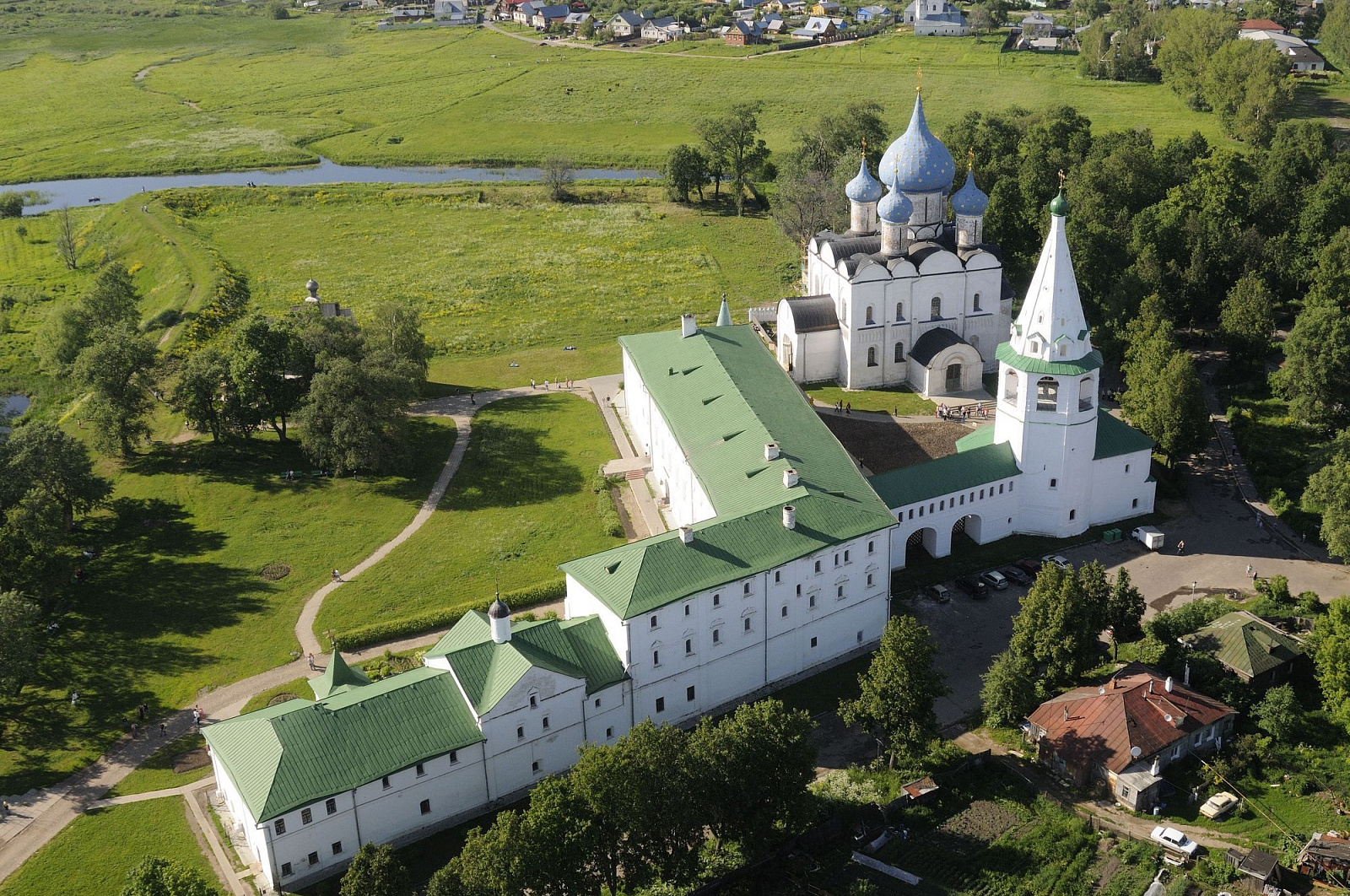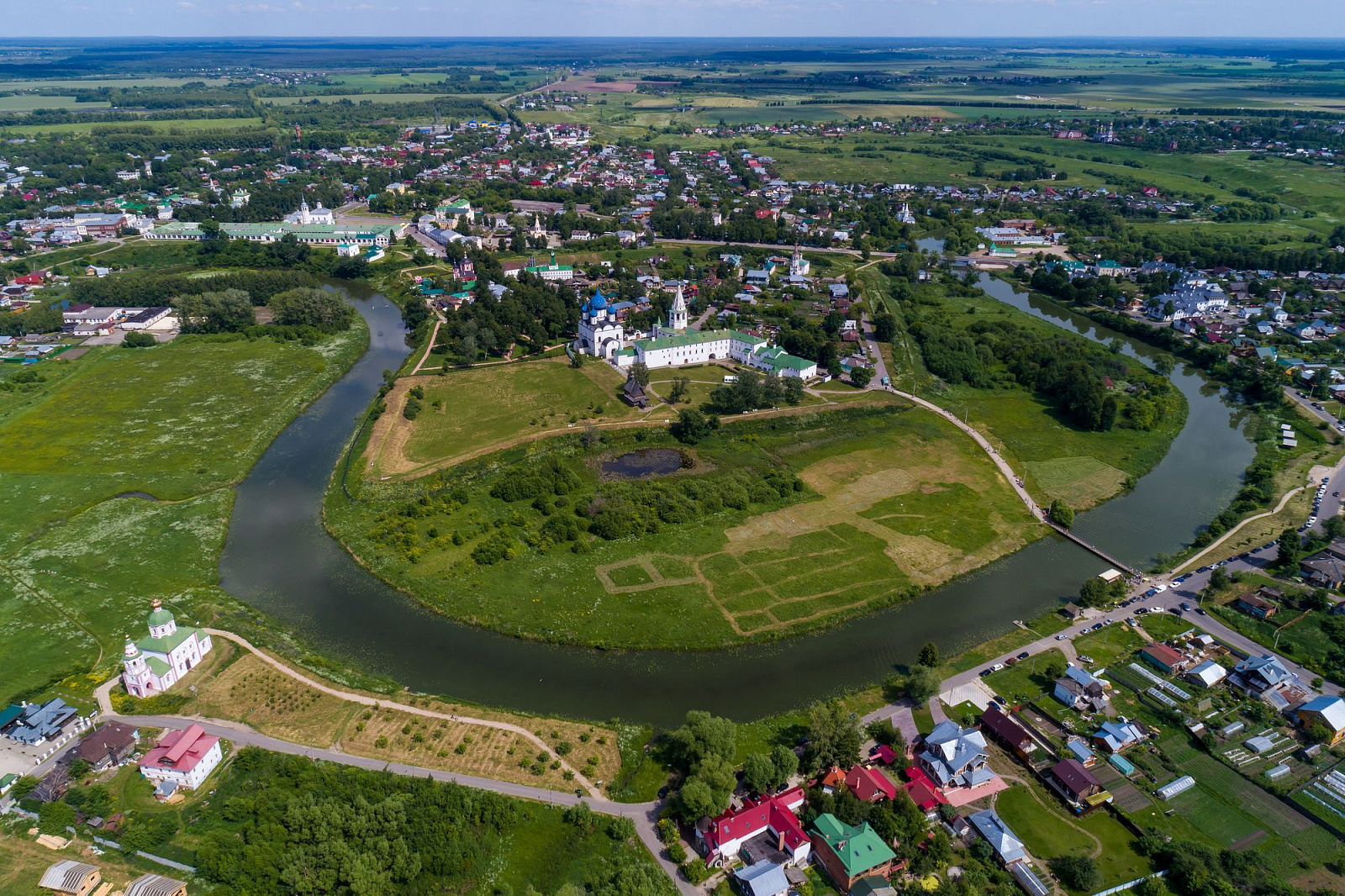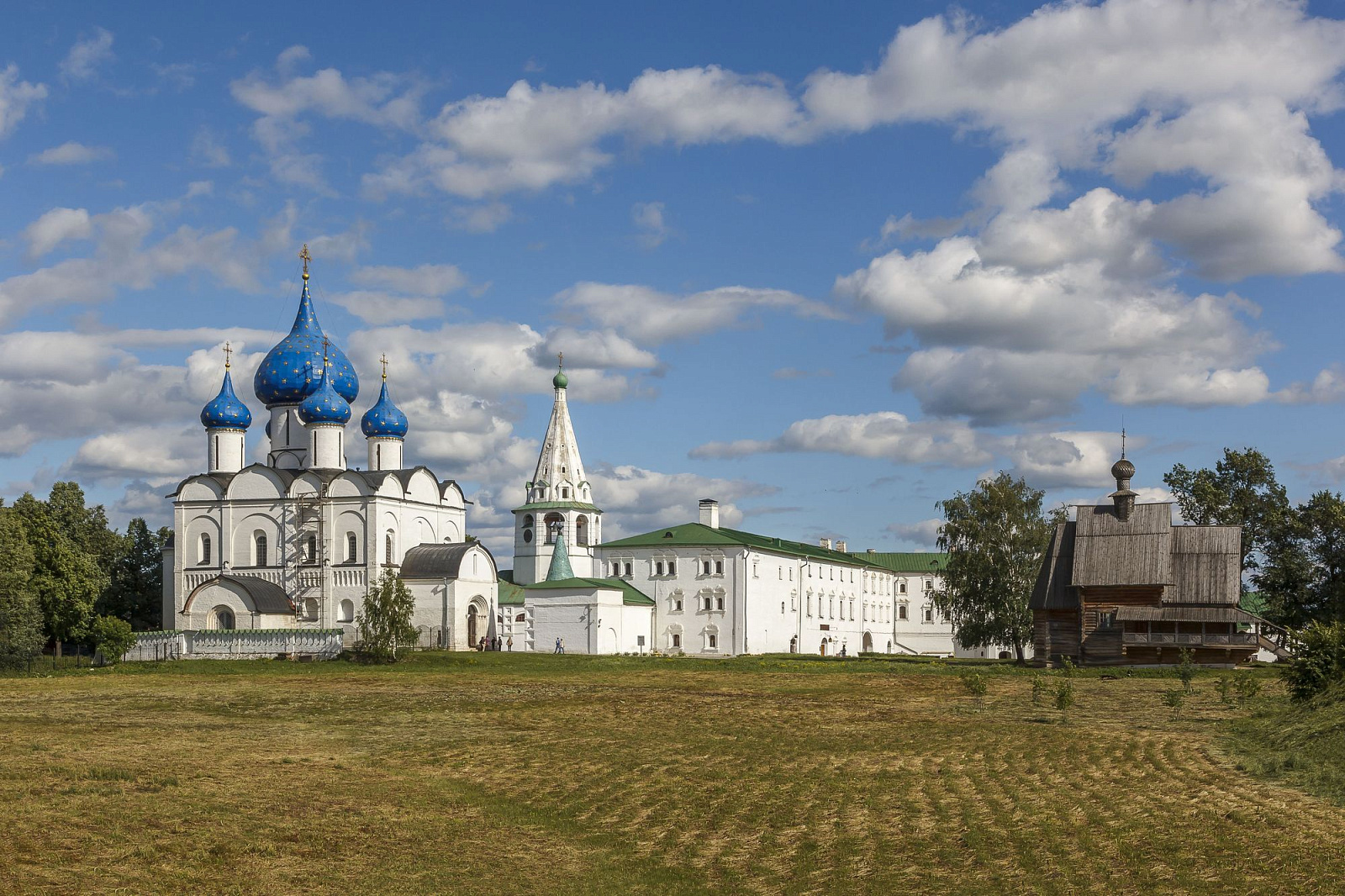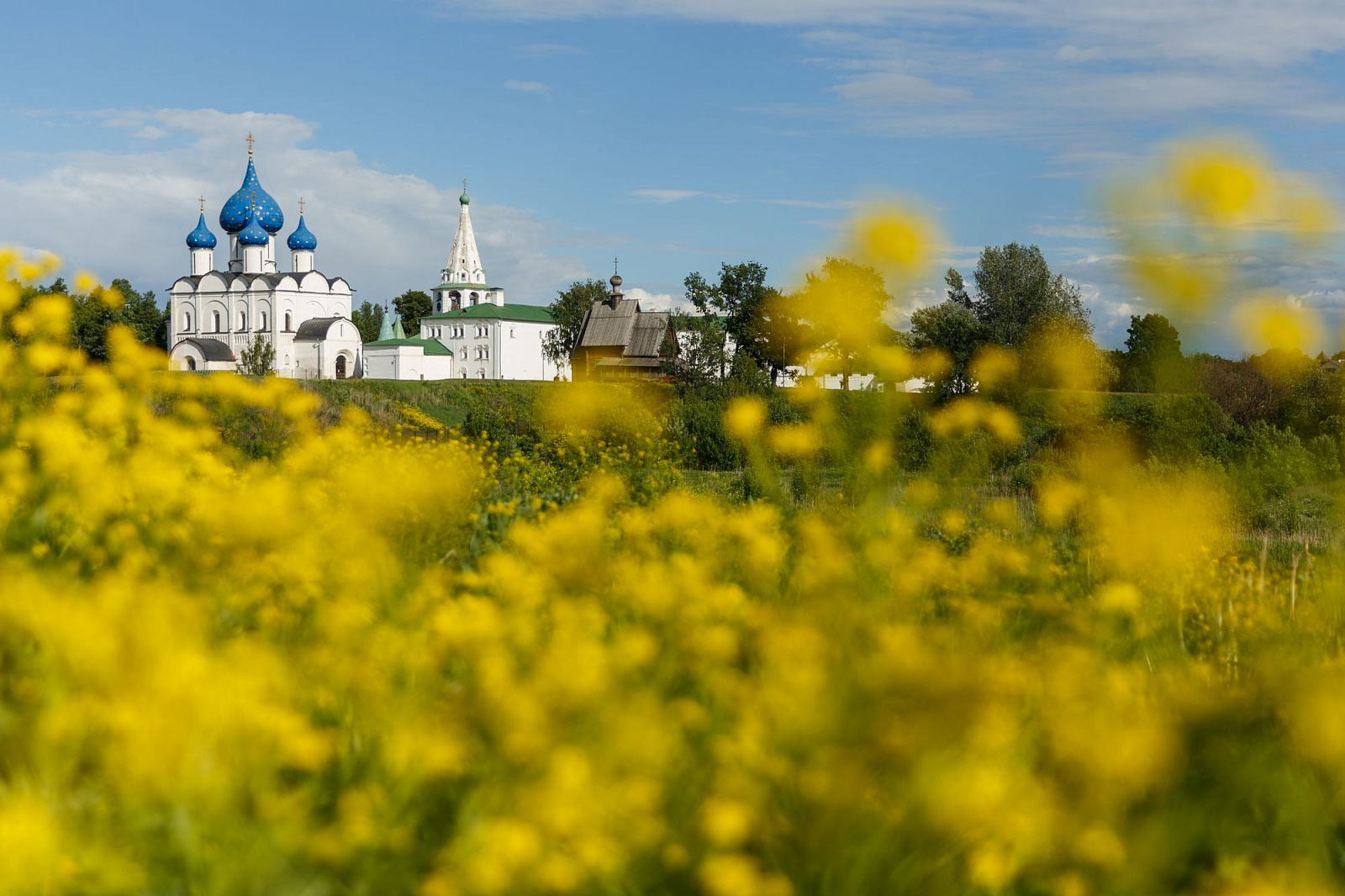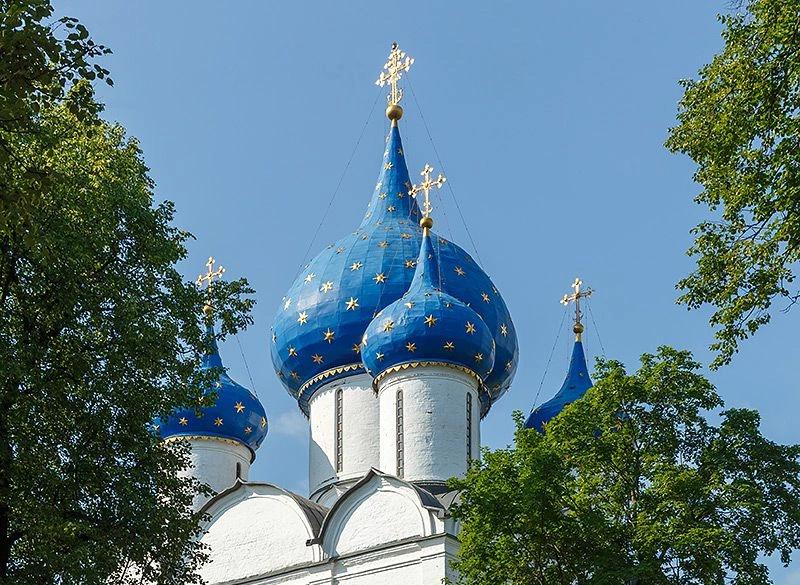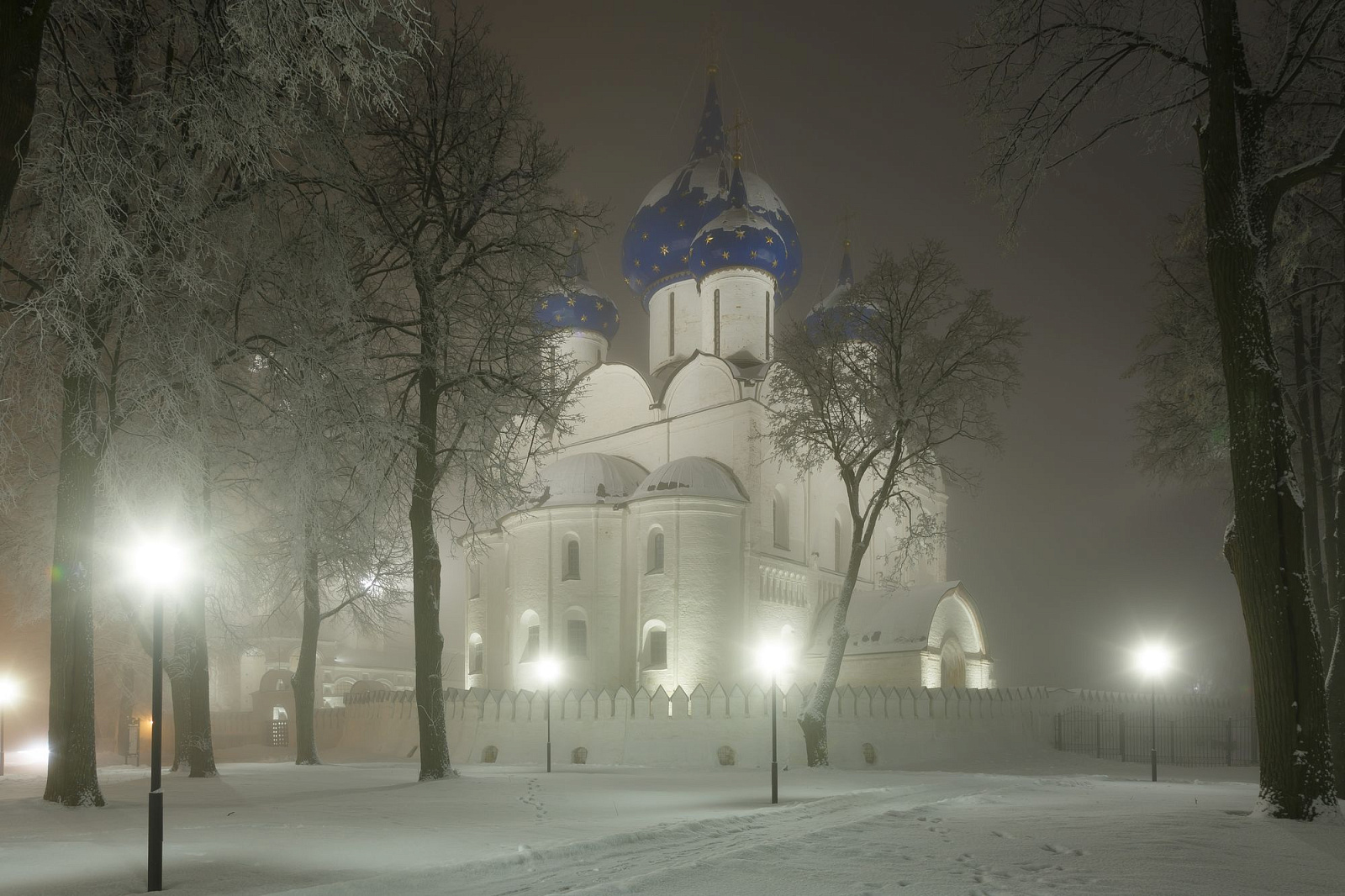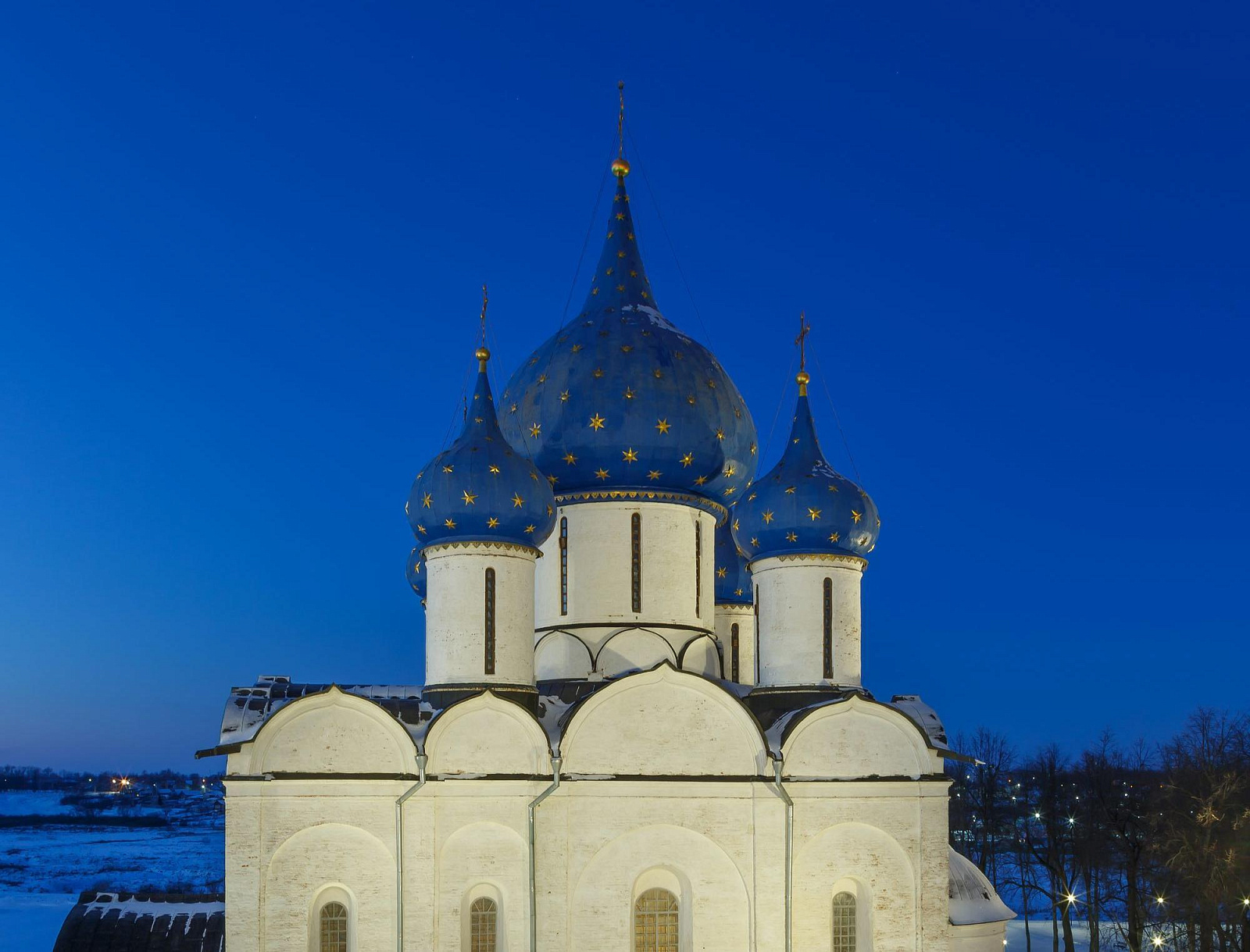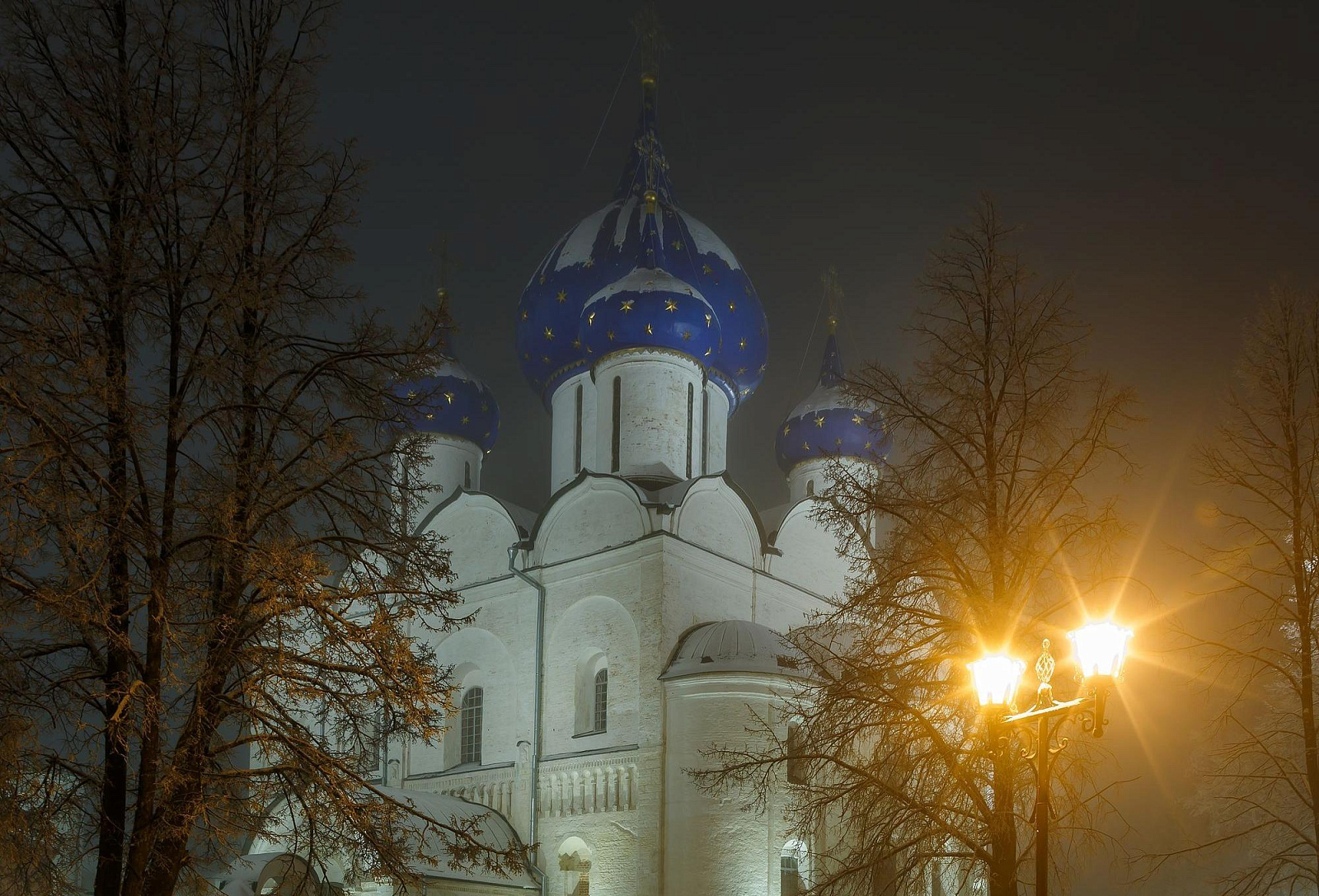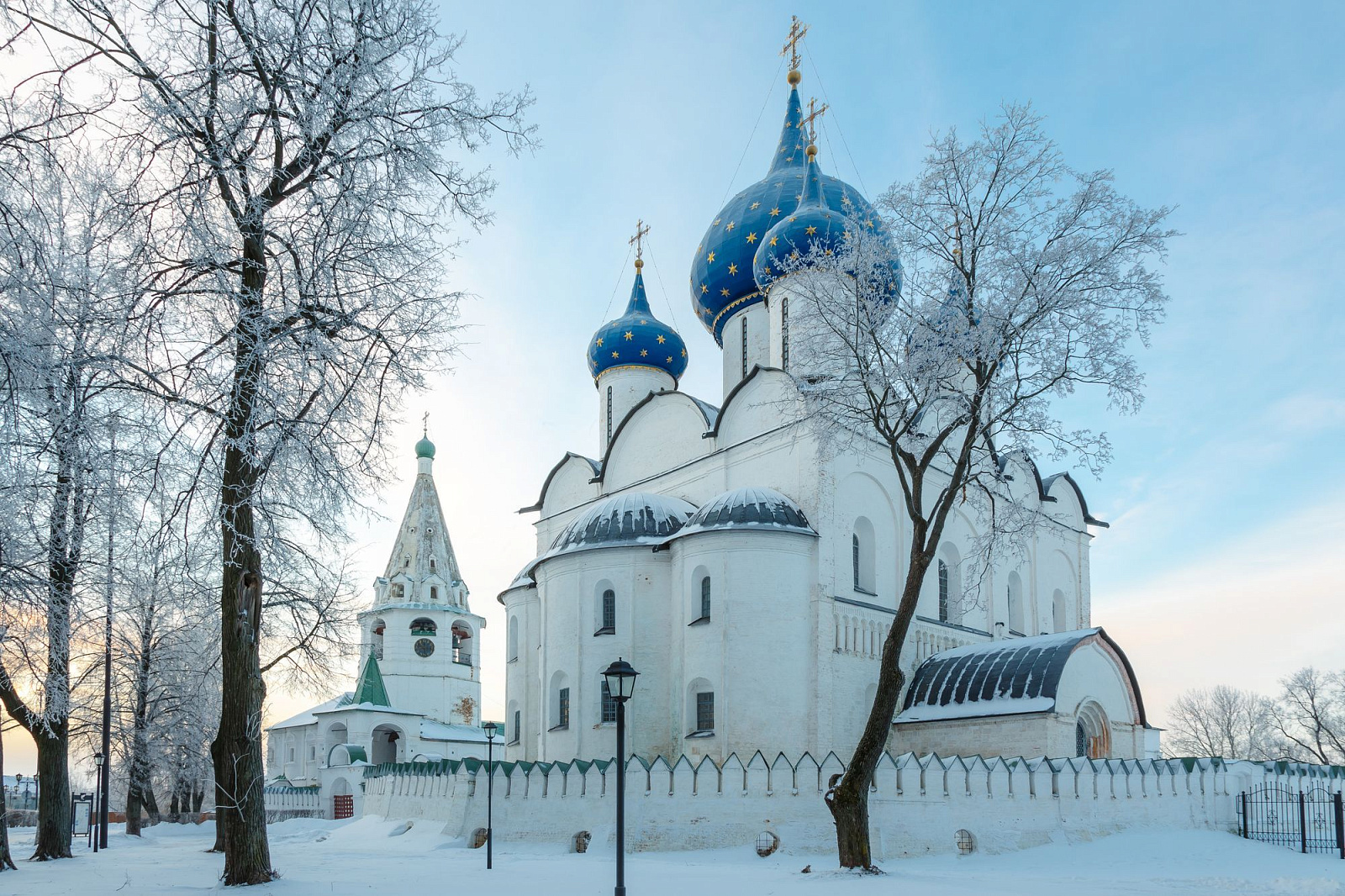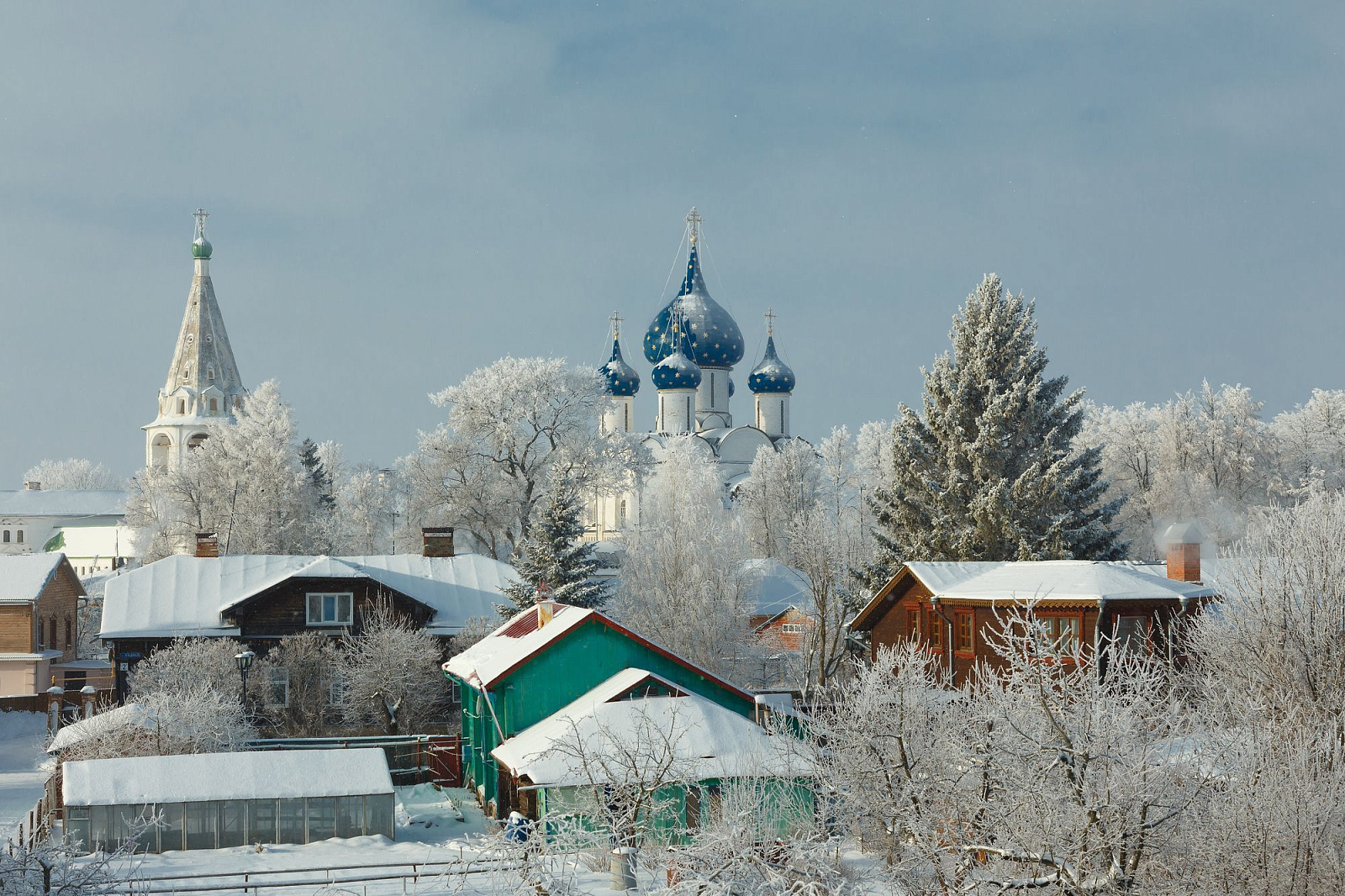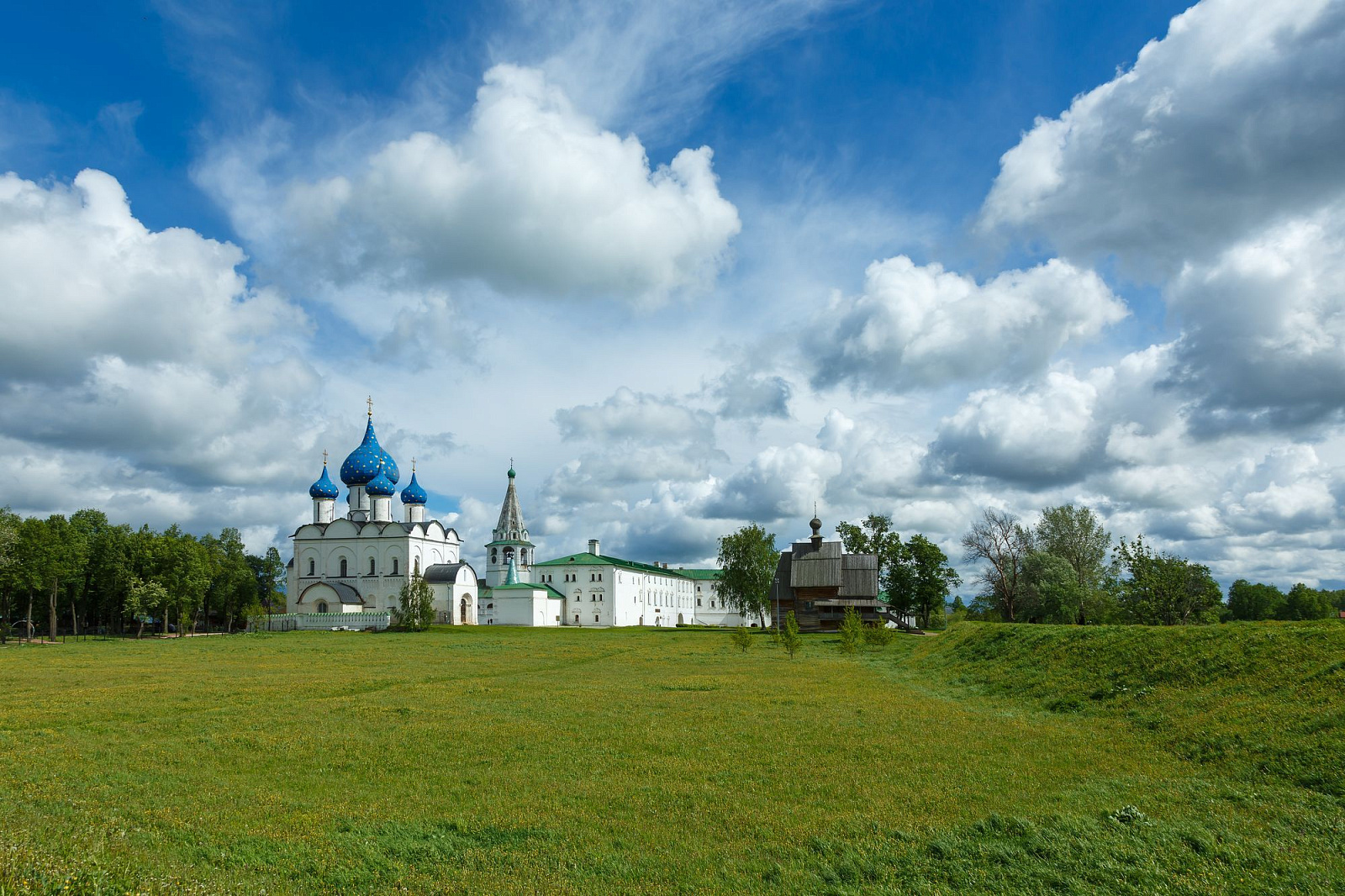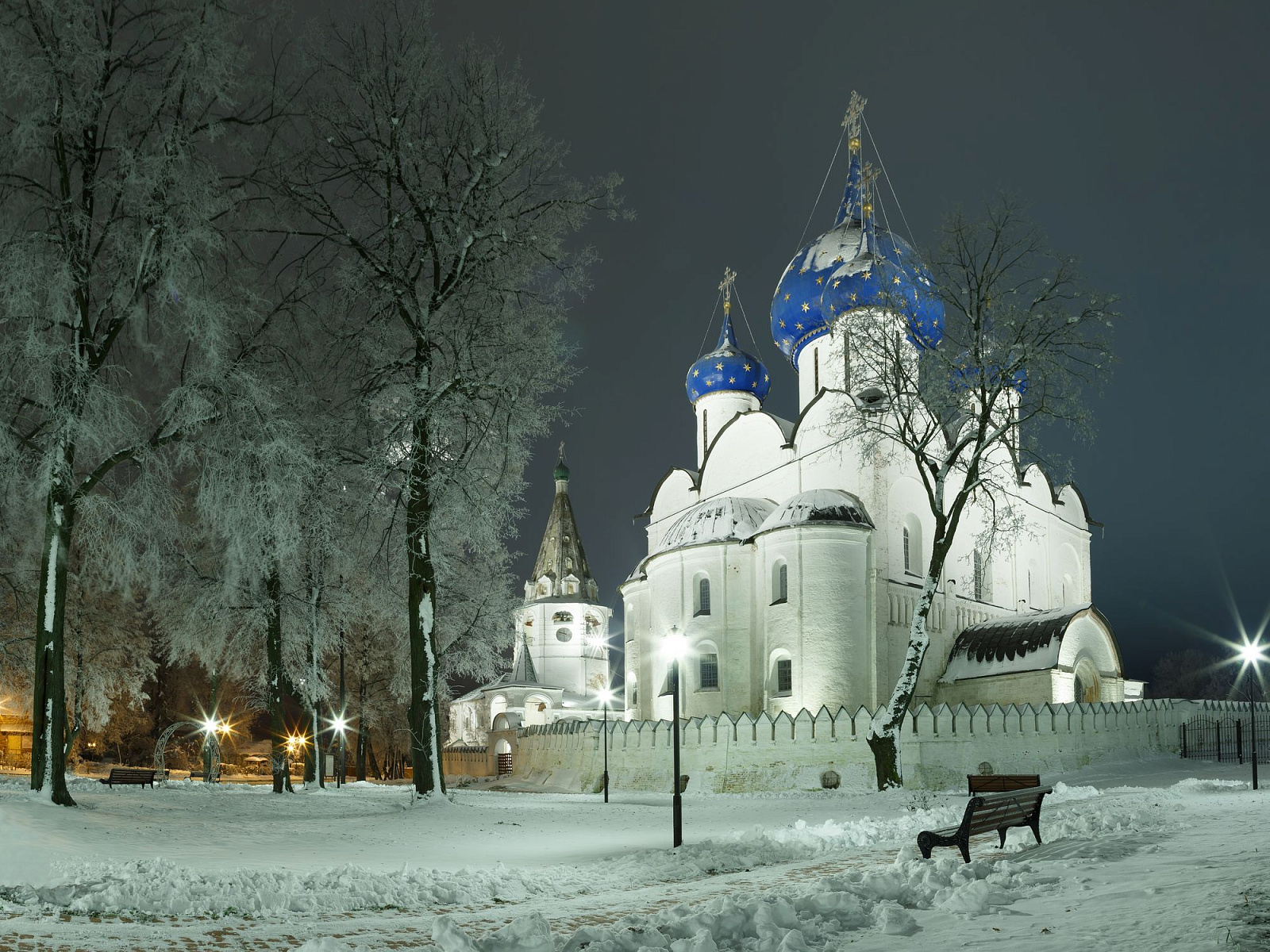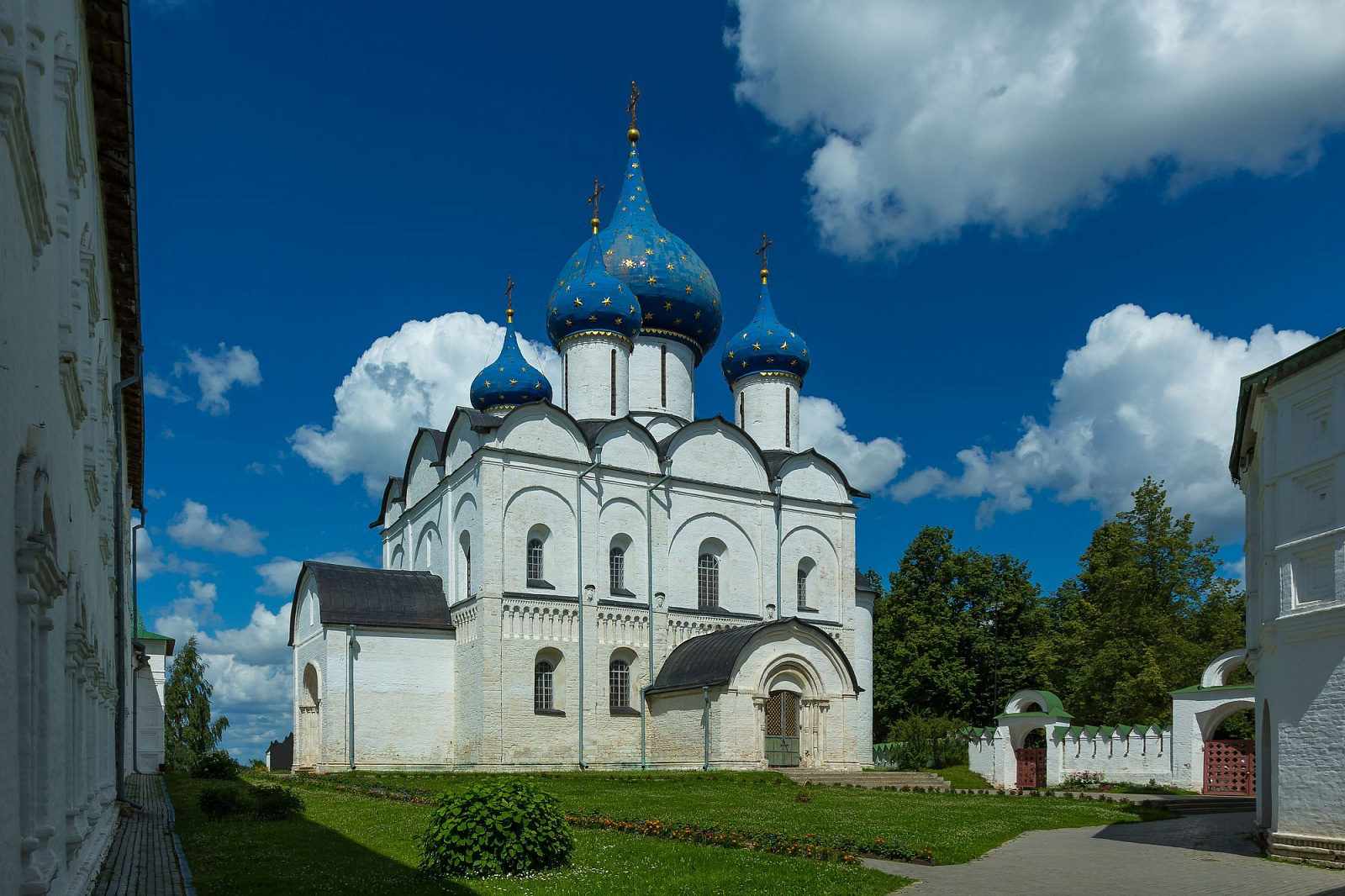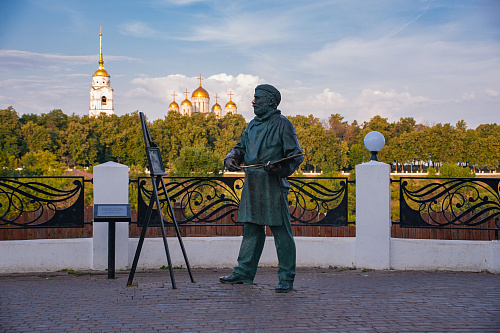Suzdal Kremlin
The Suzdal Kremlin represents an ensemble of the 13th to 18th century architectural monuments. The oldest one of them is the Nativity Cathedral. The southern and the western entrances to the cathedral are adorned with the famous "golden gates" made using the fire-gilding technique. The kremlin is listed as a UNESCO World Heritage Site.
A kremlin is the core of a medieval city, its oldest and fortified part. The banks of the Suzdal Kremlin were raised on the cusp of the 10th and 11th centuries and changed their appearance on more than one occasion. The old bank was cut short in the 18th century and transformed into a walk. It survives like that to the present day. The gaps in the fortress bank indicate the locations of the old towers serving as the gates to enter the Kremlin.
The Nativity Cathedral is a remarkable monument of the white-stone architecture of the pre-Mongolian Vladimir-Suzdal Rus. Its construction continued from 1222 to 1225.
The Archbishop Court Ensemble was formed over several centuries (15th to 18th). The first brick-built chambers of the Suzdal Most Reverend arose in the 15th century close to the Nativity Cathedral. In the 16th century, a refectory church was erected at some distance.
Today the Archbishop's Home site houses the expositions of The History of the Suzdal Region, The Jordan Ciborium of the 17th Century (the only one surviving in Russia)", The Tsar Book, and The Old Russian Pictorial Art, as well as the Children's Museum Centre and the Cross Chamber.


